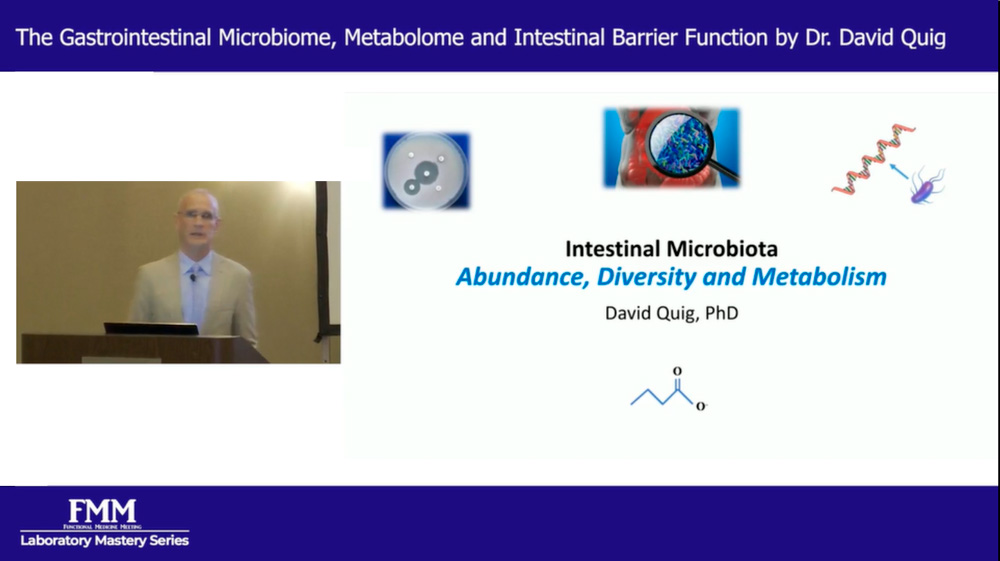Description
Instructor: Dr. David Quig
This presentation will delineate the crucial roles of a balanced intestinal microbiome and its collective metabolites in the maintenance of the multi-layered intestinal barrier system. The intestinal barrier system prevents the influx of inflammatory and antigenic macromolecules from the lumen of the gut. Primary beneficial bacterial guilds communicate with specialized cells in the mucosa to regulate the production of mucins, anti-microbial compounds, secretory IgA, an appropriate immune response and gene expression of tight junction proteins. The primary objectives are to: (1) instill a greater appreciation of the supra epithelial gastrointestinal barrier system and regulation thereof, and (2) understand the pros and cons of the various technologies for analysis of the gastrointestinal microbiome, per se.
Components covered include:
Microbiome Bacterial Abundance, GI Pathogens including viruses, parasites and protozoa, RBC, WBC, Muscle fibers, vegetable fibers, crystals, pollen, macroscopic appearance, mucus, pathogenic bacteria, yeast, digestive absorption, inflammation, SIgA, short chain fatty acids, intestinal health markers including pH, occult blood, and B-glucuronidase
Relevance to the medical profession:
Diet, life style and medications may affect the composition of the gastrointestinal (GI) microbiome, metabolome and intestinal permeability as to cause GI and systemic inflammation, excessive oxidative stress and autoimmune conditions. A thorough appreciation of the central role of the “gut” may facilitate clinical intervention to resolve or ameliorate sustained adverse health conditions.
Key Learning Objectives
After this presentation attendees should be able to:
– Discuss the multi-layered gastrointestinal barriers
– Develop an awareness of the clinical implications of the often overlooked insufficiency dysbiosis
– Explain the significance of microbial-host cross talk and the roll of adequate dietary soluble fiber
– Apply interventional strategies to restore barrier functions in their patients
– Cite the three primary methods for identification of gastrointestinal microbes
– Discuss the strengths and limitations of the primary methods for identification of gastrointestinal microflora
– Select the methodology that best suits the primary needs for microbial identification in their clinical setting
 Dr. Quig received his BS and MS degrees in Human Nutrition from Virginia Tech and a PhD in Nutritional Biochemistry from the University of Illinois. After a five year stint as a Research Associate studying lipid biochemistry and cardiovascular disease at Cornell University, he was a Senior Cardiovascular Pharmacologist for seven years. For the past 23 years David has been the Vice President of Scientific Support for Doctor’s Data, Inc. He has focused on the influence of the gastrointestinal metabolome on overall health, toxic elements, methylation and amino acid metabolism, and the applied biochemistry of endogenous detoxification.
Dr. Quig received his BS and MS degrees in Human Nutrition from Virginia Tech and a PhD in Nutritional Biochemistry from the University of Illinois. After a five year stint as a Research Associate studying lipid biochemistry and cardiovascular disease at Cornell University, he was a Senior Cardiovascular Pharmacologist for seven years. For the past 23 years David has been the Vice President of Scientific Support for Doctor’s Data, Inc. He has focused on the influence of the gastrointestinal metabolome on overall health, toxic elements, methylation and amino acid metabolism, and the applied biochemistry of endogenous detoxification.

